
About to sink without a trace: the Coda battery sedan didn't last much longer than the media test drive.
There’s a lot to like when it comes to the latest cars, trucks and crossovers. Today’s vehicles are, to the large degree, better than ever. Intense competition translates into more striking and creative designs, improved fuel economy, better performance and far more features.
That said, a few stinkers still slip through, models that have you wondering who was on vacation when they came up for approval. We have our own list of lemons. And by that we don’t necessarily mean they had reliability issues, but that they were plagued by bad designs, poor performance, minimal utility, unjustifiable price tags or, yes, quality problems.
We raised the question with a number of our colleagues to see what products landed on their list and found that a few, like the Pontiac Aztek and Acura ZDX, came up time and time again. Others were surprising. Indeed, some of our favorite products were listed at losers by media colleagues – and vice versa. So, we expect some of our readers will also question our judgment, perhaps our sanity. But here’s our list of the 14 worst cars of the past decade.
- The Pontiac Aztek is a vehicle that almost everyone loves to hate – with the exception of a small and loyal band of owners who simply love it. The concept was right, the idea of creating a sort of Swiss Army Knife on wheels. But the execution was another matter entirely, with one of the least appealing designs in decades. Despite several fast fixes, the Aztek lasted from just the 2001 to 2005 model-years.
-
The Acura ZDX is another one of those vehicles that must have seemed like a great idea in the planning stage: meld an SUV with a sporty coupe. But the result was neither very sporty nor offered much in the way of additional utility. Launched in 2009, the ZDX was greeted with a collective yawn and Acura dealers are still trying to get the last of them off their lots a year after the model official left production.
- The Honda CrossTour is a near-twin of the ZDX, albeit for a more mainstream audience. But it received only a slightly better market reception, despite the Japanese maker’s attempt to tinker with its name, sometimes calling it the Accord CrossTour, sometimes not. Oddly enough, though similar in looks and (lack of) functionality, the CrossTour and ZDX didn’t share platforms, just a lame concept.
- The Mitsubishi i-MiEV is one of a long list of flops from one of Japan’s smaller and most troubled Japanese brands. The little battery-electric vehicle was supposed to take advantage of an anticipated boom in demand for alternative energy, but despite a reasonably affordable price, its goofy looks, lame performance and limited range have translated into minimal sales.
-
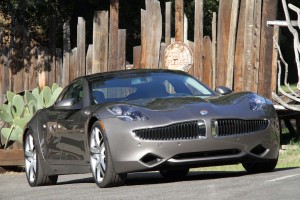
The Fisker Karma boasted a striking design, but it had numerous problems - and a parent company that was sorely underfunded.
The Fisker Karma shouldn’t belong on this list, but for the California-based battery-car start-up, it wasn’t even a one-hit wonder. The plug-in hybrid actually had one of the most beautiful designs the industry has seen in years – no surprise considering founder Henrik Fisker used to design Aston Martins. But the car was plagued by technical problems, recalls and fires. And the maker ran out of money, folding its tent with barely 1,000 actually in buyers’ hands.
- The Nissan Murano CrossCabriolet was another vehicle that must have seemed like a great idea, especially if Japanese planners were talking it over at an after-work sake bar. Considering utility vehicles outsell sedans today, why not come up with a niche version of the popular Nissan Murano by outfitting it with a convertible top? The CrossCabriolet generated plenty of attention after its late 2010 debut, but sales have been minimal, at best.
- The most recent Chrysler Sebring was another good idea badly executed, perhaps because it was a result of an aborted, three-way alliance between Chrysler, former German partner Daimler, and Japan’s Mitsubishi. It was awkward, ungainly and not much fun to drive. And shortly after Chrysler’s bankruptcy and takeover by Italy’s Fiat, the Sebring name was ditched, the sedan and convertible given some urgent tweaks, and renamed the Chrysler 200.
-
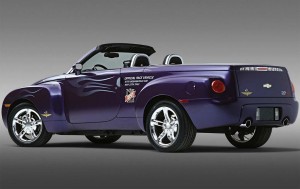
It seemed like a good idea at the time: a combination Corvette, pickup and convertible dubbed the Chevrolet SSR. It wasn't.
The Hummer H3 was the product of one of many questionable strategies by General Motors. Taking a cue from actor-cum-Governator Arnold Schwarzenegger, who turned a military HUMMVEE into an around-town toy, GM started rolling out a procession of Hummer-badged vehicles that, while reasonably capable off-road, had little else going for them beyond the visual intimidation factor. The H3 was clearly the worst – and, thankfully – the last in the line before GM killed Hummer following its 2009 bankruptcy.
- The Chevrolet SSR was another great GM idea that fell flat. The basic concept was, well, intriguing, to create “the Corvette of pickup trucks,” and then give it a folding hardtop roof. The result was a vehicle that was heavy, rattle-prone and nowhere near as fast as its big V-8 might have suggested. Despite upgrade the original 5.3-liter engine to a more robust 6.0-liter eight-banger, Chevy euthanized the SSR in 2006, after barely three years.
- The Lincoln MKT should have been a natural. The big crossover-utility vehicle was set to come to market just as Ford’s luxury brand pulled the plug on its aged Town Car. Beyond the personal luxury buyers, there’s a huge market for limousines and livery customers were expected to rush to place orders. It didn’t happen, perhaps because of the MKT’s ungainly design – which critics likened more to a hearse than a limo.
- The Pontiac Solstice Coupe was another design that seemingly no one had asked for, a hardtop version of the Solstice Roadster that came to market shortly before the Pontiac brand was abandoned as part of General Motors’ 2009 bankruptcy. Barely 100 were produced. The Solstice convertible and near-twin Saturn Sky were somewhat better received but critics faulted them for engineering shortfalls. All three models were dropped after GM’s run through Chapter 11.
-
The Subaru B9 Tribeca was one of the rare failures from the Japanese maker – the only brand to actually grow sales and market share during the Great Recession. It was the latest attempt by the mainstream Subaru to move up-market, but the crossover-utility vehicle came to market with a puckered front end that was the target of many jibes. Even a modest redesign couldn’t save it.
- The Chrysler Aspen Hybrid was on the market so briefly that most potential buyers likely didn’t even know it existed. The Aspen itself was the first and only SUV ever marketed under the Chrysler brand, largely rebadging a version of the more popular Dodge Durango. A high price tag and limited fuel economy gains doomed the Aspen Hybrid with total production measuring only in 100s. It was reportedly one of the shortest-lived models from a major automaker ever.
- The Coda had perhaps one dubious distinction going for it: the sedan was the first Chinese-made vehicle ever sold in the U.S. Well, sort of. It started with an outdated 4-door body that was then stuffed with an American-made electric drivetrain. Creature comforts – and safety features were minimal, range was limited, and the price was high. Car and the company were both dead on arrival.
In reality, our list could run far longer. There’s a long line of additional candidates that have had many of the attributes of failure – whether poor styling, lack of utility, lousy performance, limited features, or price tags that didn’t reflect reality.
Among them are the small Saturn Ion sedan, the boxy Nissan Cube, the striking but poorly executed Cadillac XLR, the bulbous Jeep Commander, the over-styled Isuzu Vehicross the ungainly Toyota Echo and the Lincoln Blackwood, a luxury pickup that answered a question no one asked.
What’s significant is that virtually every automaker, large or small, mainstream or luxury, domestic or import, has occasionally missed the mark and delivered a vehicle that’s left us scratching our heads and wondering why.

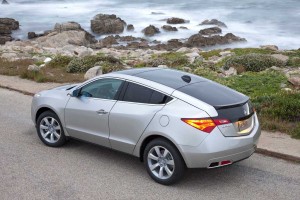
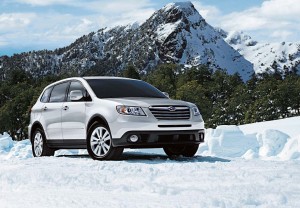
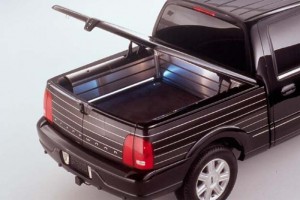
It’s interesting what some people view as beautiful car styling vs. others. It’s no surprise that some of the above losers failed on body styling alone.
Am I the only one who actually liked the Aztek? Of course, I wasn’t smitten enough to actually buy one.
So you’re the other guy on the planet that bought an aztek. Yeah I don’t get it. The thing was roomy, extremely comfortable, got good gas mileage and was full of creative touches. Loved the cooler/consol, the tailgate stereo controls and the compartmentalized cargo drawer. I kept that car longer than any other.
I don’t know why you would include the Nissan Cube on your runner up list. They sure seem to be selling well in my neck of the woods. As for the Aztek, I’m struck by its similarities to the much more successful Honda Element, a vehicle that should have had a second generation.
Bryan,
Even weak vehicles like the Cube seem to find a market somewhere, but overall sales have fallen well short of expectations and the U.S. model is widely expected to go away after this year.
Paul E.
Jeep Commander is a great vehicle at a great price. Drive one and then judge.
I can not believe they have to mention to the Nissan Cube, I have a cube and it is perfect for one person and it gets great mileage. I have had cars like Mustangs 66 and z28 cammaro but I needed dependability and my cube might not be beautiful to some, I got the sporty model which I did have to laugh when the guy told me that, but I love my little Mortisha she looks like a mini hearse. I would not trade her for the world. She is wonderful and gas savvy to me.